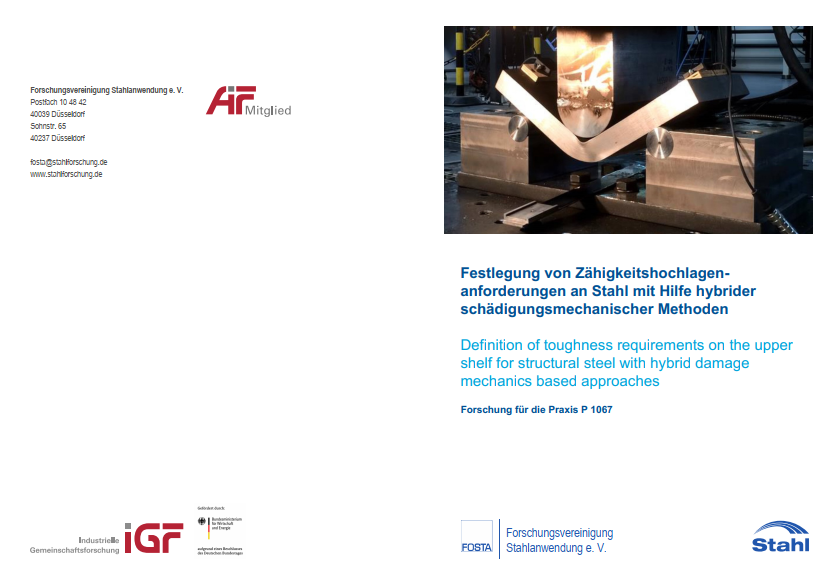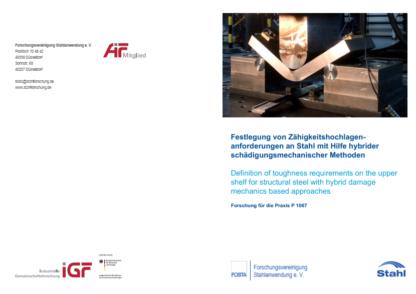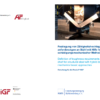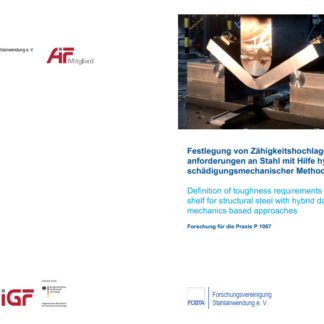Description
P 1067 -Definition of toughness requirements on the upper shelf for structural steel with hybrid damage mechanics based approaches
In addition to the ultimate limit state assessment which is based on ductile material behaviour the design concept in Eurocode 3 requires a toughness-orientated verification according to EN 1993-10 or DASt-RiLi 009 in order to avoid brittle fracture. The choice of steel grade, together with the requirements of the tensile test, is also regarded as guarantee for ductile material behaviour.
In Germany a further toughness test in the upper-shelf, the so-called „Aufschweißbiegeversuch“ (AUBI) according to SEP 1390, is required in general for welded steel constructions for steel grades up to S355J2 with element thicknesses above 30 mm to estimate the crack-arrest capacity of the parent material. Within the harmonising process of European Standards, the AUBI was not accepted by the other EU-member states.
Instead, a lower-shelf orientated equivalence criterion was established by utilizing the acknowledged material properties of fine grained steels.
In the past, studies were carried out to correlate the AUBI with notched bar impact results; an undertaking which, due to its highly empirical character, did not lead to satisfaction and left questions unanswered. The unsatisfying situation is that the AUBI is used only as a special substitute test for compliance with a special delivery condition. However, it is hardly justifiable and cannot be applicable without any restrictions as an upper shelf criterion from a material mechanic point of view with regard to the safety demands of steel structures. Anyway, the test has not been developed for the growing demand of the exploitation of high-strength steel and varying sectional geometries.
In the European product standards the toughness is tested under the notched bar impact test. It is therefore desirable to cover the remaining areas, which the AUBI is still required for in Germany, with formulations of minimum values from the notched bar impact test, especially for the upper shelf region. This applies both for ranges up to S355J2 and for high-strength steels as well as for other product forms based on the nominal values of the materials.
This is the aim of this research project. Therefore, innovative scientific approaches using hybrid damage mechanic models for the numerical simulation of the AUBI test considering the failure mechanism cleavage fracture (lower-shelf) and ductile fracture (upper-shelf) are applied. As a result, the correlation of the upper shelf toughness of the notch impact bending test with the AUBI could be consistently shown and numerically determined for all steel grades and thicknesses. This has created a general criterion that overcomes the material and product related restrictions of the AUBI.
Main content only available in german language.
Published in:
April 2019
FOSTA – Research Association for Steel Application




